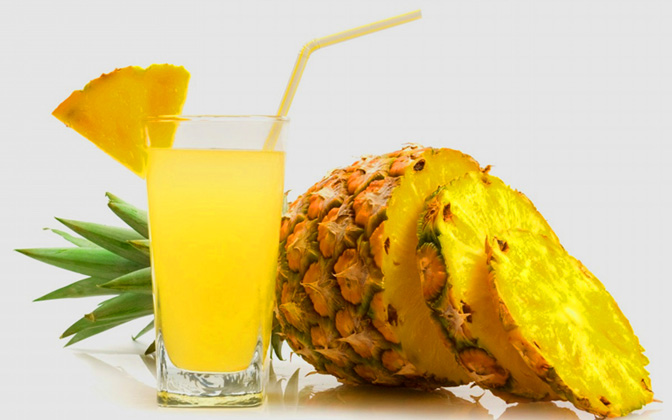Pineapples, also known as ananas, is a popular and healthy fruit. Pineapples have special shapes. They are juicy and sweet, with distinctive flavor. People call it “the queen of fruits”. Usually, we eat pineapples directly or make them into juice.
Pineapples is rich in nutrition, such as sugar, proteins and vitamin c. Eating pineapples can help clear summer heat, engender liquid, allay thirst, and induce diuresis. Besides, pineapples contains a special substance called Bromelaine that can break down proteins, and dissolve the fibrin and blood clot blocked in your tissue. So eating pineapple can improve your blood circulation and eliminate inflammation and edema. It is helpful to eat some pineapples after meat or other greasy food.
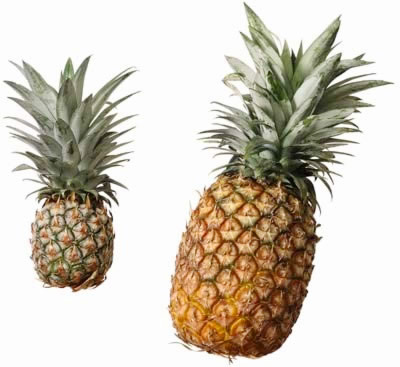
How to pick out high quality pineapples?
Whether you want to eat it directly or make pineapple juice, the quality of pineapples influence the taste and nutrition absorption. Here are some tips your can use to select out superior quality pineapples.
Observe the appearance and shape of pineapples
High-quality pineapples appears as cylindrical or oval with two ends a little pointed. They are neither too large or too small. The shape is regular. There aren’t too much bud eyes on the body. High–maturity pineapples looks light yellow or luminous yellow, with light green on both ends. The crown buds are green and brown.
If the top of a pineapple is plump, the peel turns into yellow, and the flesh is soft and yellow, it has reached 90% maturity. Such pineapples are rich in juice and sugar, with heavy flavor and wonderful taste.
Unripe pineapples looks livid with a little brown. If you don’t eat it at once, you'd better choose those of 70%-80% maturity. These pineapples are still hard. The color is light yellow with a little green. In short, golden pineapples is more mature than those looks green, and the taste is more sweet.
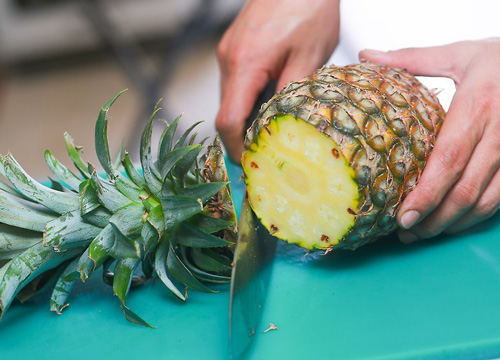
Observe the pineapple fruit flesh and tissues
Cut the pineapple apart. If the pineapple insides looks light yellow, the flesh is thick and the core is small, this indicate high quality of the fruit. On the other hand, if it is loose inside with large clearance, the flesh is thin and the core is large, this fruit can be recognized as inferior. In terms of unripe pineapples, the flesh is crisp and looks white.
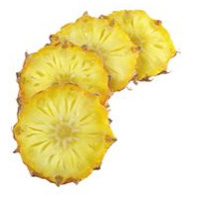
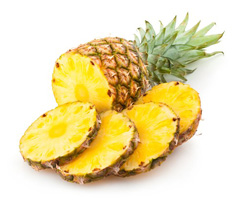
Inspect the hardness of pineapple fruit
When you select pineapple fruit, you can press it with your hand. If the pineapple is hard with no elasticity, that must be an unripe fruit. Ripe pineapple fruit feels a little soft and porous. If the pineapples collapse when you press it, they are overripe fruit. If there are juice flows out when you put the pineapple aside for a while, this pineapple has already gone bad and uneatable.
Smell the pineapples
The aroma of pineapples is another reference to judge the ripeness. Usually, you can smell a trace of fragrance on the surface of ripe pineapples, and rich flavors in the pineapple flesh. Too strong fragrance means the pineapple is overripe. You should keep it for long or it can easily go bad. On the other hand, you cannot smell anything in unripe pineapples. Those pineapples don’t taste good for the lack of sugar. So, I recommend you to choose those with a trace of fragrance.
3 useful tips to choose pineapples
- Those dumpy pineapples are more likely to be yummy and sweet, because their fruit flesh is solider and richer than those lanky ones.
- Those large-sized pineapple tend to be tastier than small ones, they are better developed with more nutrients.
- Leaves is also an important indicator. You can identify the production place according to the length of the pineapple leaves. Pineapples with long leaves are more likely to grow in low latitude areas, and those with short leaves grows in high latitude areas. Generally, pineapples taste better in tropical areas.
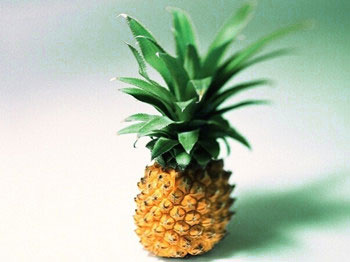
Tips to eat pineapples
To eat a pineapple, you should remove the peels first. Then I recommend you to cut the pineapple into pieces, and dip them in light salt brine for about 30 minutes. After that, rinse them with fresh water to remove salt. In this way, we can relieve the stimulation of bromelain on our oral mucosa and epidermis.
How to make pineapple into juice
Besides eating pineapples directly, making pineapple into juice is another popular trend. For family consumption, you can feed the pineapple pieces into a juice extractor. For mass production or business purpose, you need a complete pineapple juice production line. It include pineapple washing machine, sorting machine, peeling and extraction machine, pineapple juice filter, degasser, sterilizer and aseptic filler. AGICO is professional fruit juice machinery manufacturer and supplier, we can provide customized solution according to your fruits and production demand.
